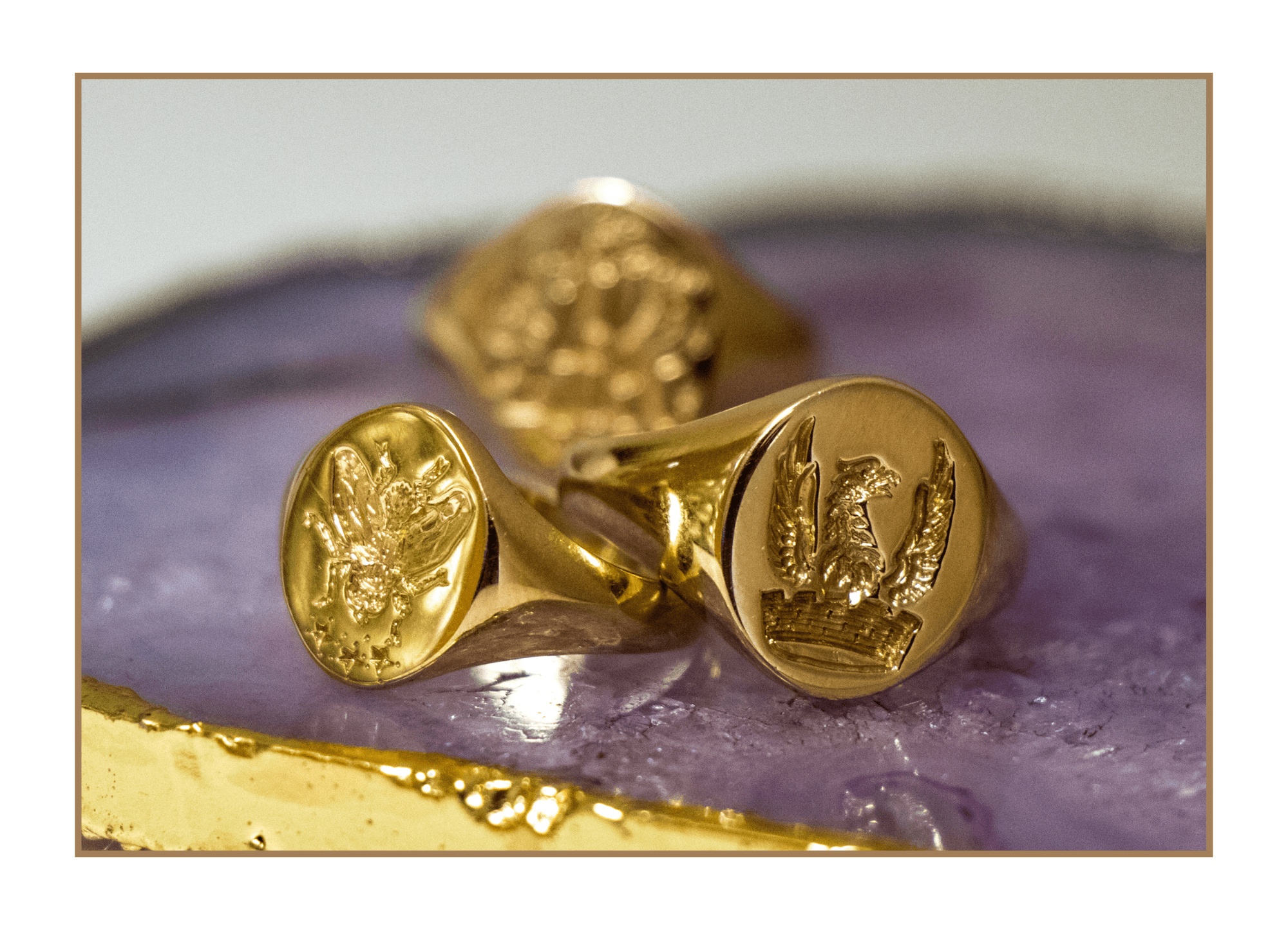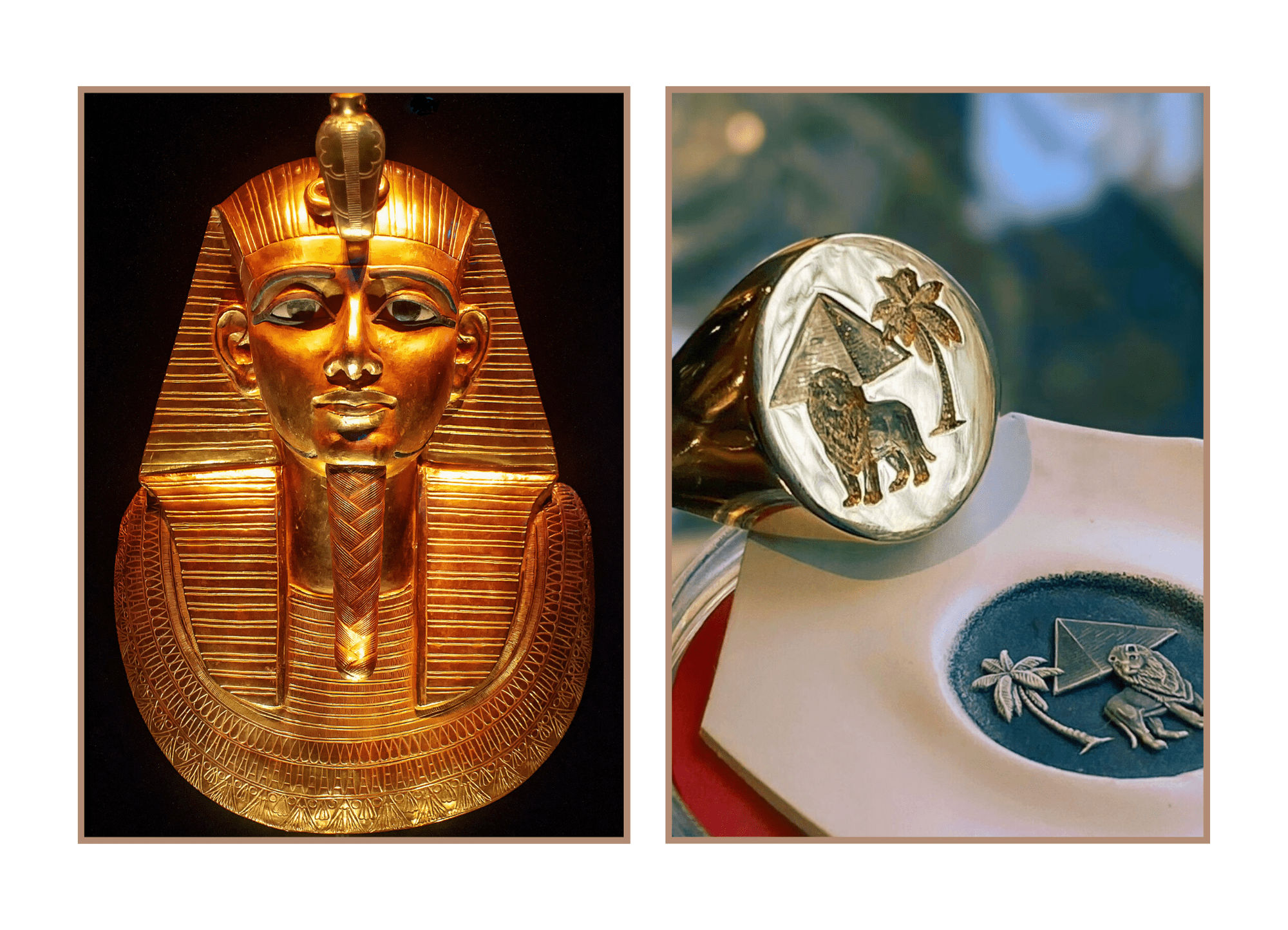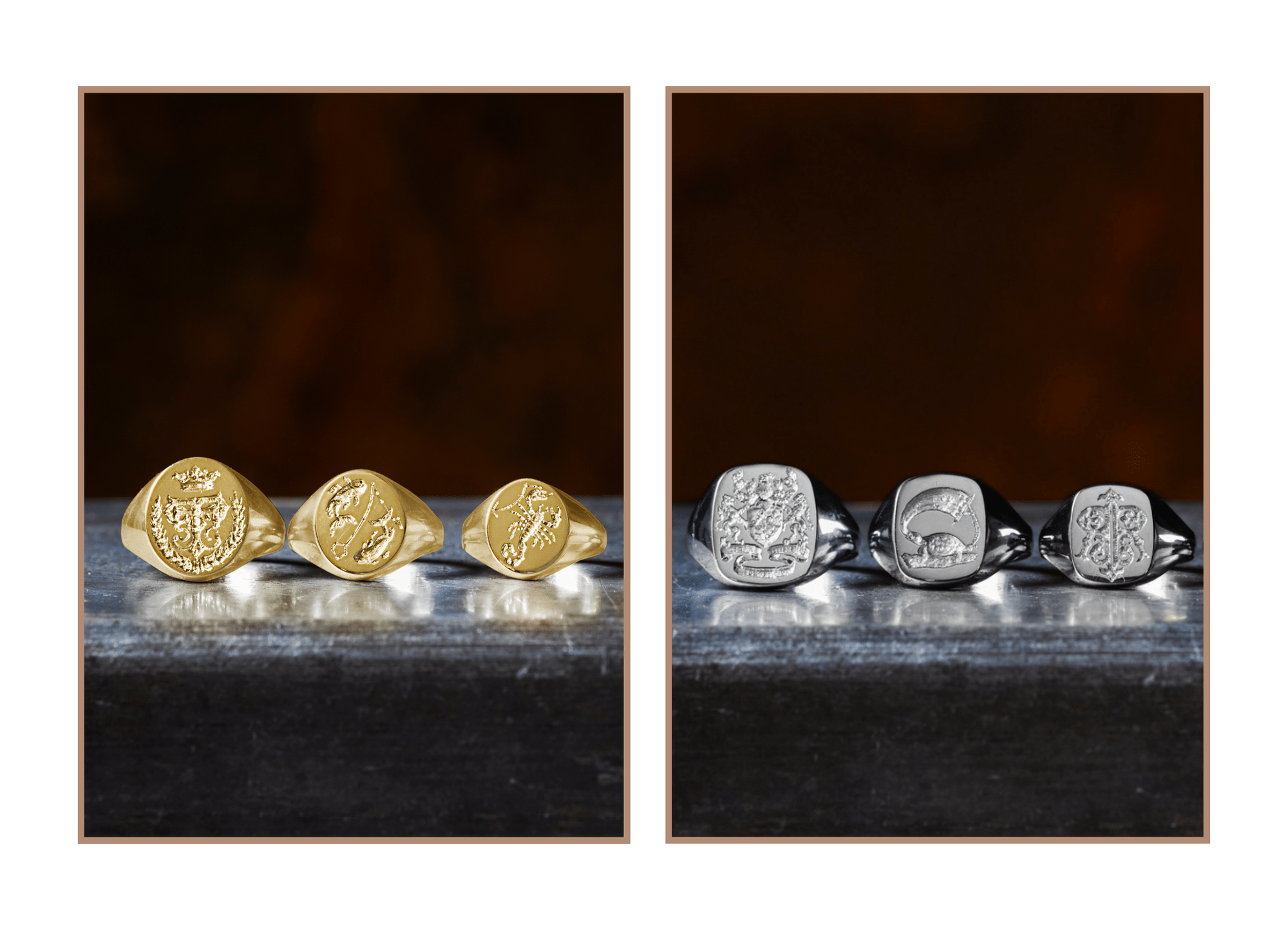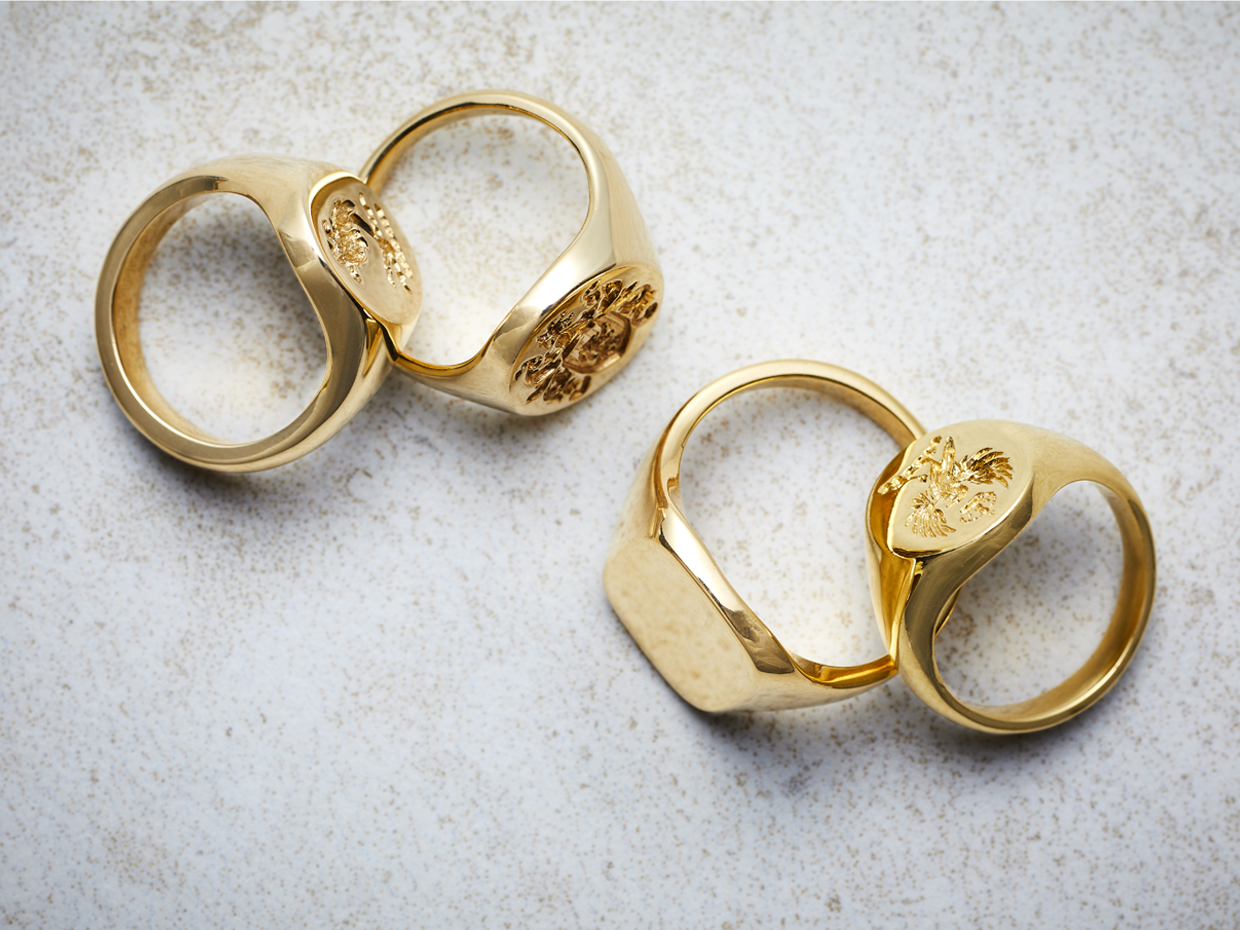Long before gold became the backbone of banking systems or the glint in a jewellery shop window, it was a metal not just mined, but mythologised. Prized by pharaohs, plundered by empires, and passed down through generations, this luminous metal has shaped the course of history and held its value every step of the way.
At Rebus, we engrave stories into gold every day. But the metal itself already tells one of the oldest stories on Earth. We never forget we’re part of something much bigger. A signet ring isn’t just a personal signature, it’s a link in a chain thousands of years long.


The First Flame
Gold is one of the very first metals ever worked by human hands. Its natural brilliance meant it could be found gleaming in riverbeds without the need for smelting: a gift from the earth, ready to be shaped.
The earliest gold jewellery dates back to around 4500 BC, discovered in the burial sites of Varna Necropolis in Bulgaria, where gold adorned the dead, hinting at complex societies that valued display, ritual, and status.
Across the world in ancient China, gold leaf was used to decorate tombs of the elite as early as the Han Dynasty, while in South America, the Moche and later Inca cultures were shaping gold into ceremonial artefacts not as currency, but as spiritual offerings.
And in India, goldsmithing techniques emerged as early as 3000 BC, with gold mentioned in the Rigveda and used in temple idols, statues, and later, elaborate bridal jewellery. India’s love affair with gold has spanned millennia, and continues today in the form of gold dowries, passed down through generations as both financial security and family pride.
Gold’s role in human history is universal but never uniform. Every culture shaped it into something that reflected their beliefs.


The Original Status Symbol
To the Inca, gold was the “sweat of the sun,” sacred rather than commercial. To the Ancient Egyptians, it was the flesh of the gods and closely linked with the sun god Ra, with gold used to fashion burial masks for their kings in the belief that it would ensure eternal life. None is more iconic than Tutankhamun's.
To these societies, gold wasn’t just beautiful. It was divine and eternal.
That belief in gold’s divine properties endured. In Medieval West Africa, gold fuelled the rise of the Ghana and Mali empires, with rulers like Mansa Musa - whose 14th-century pilgrimage to Mecca, laden with gold - destabilised entire economies through sheer generosity.
In fact, the first known currency made of gold was minted in Lydia (modern-day Turkey) around 600 BC. King Croesus was the first ruler to mint pure gold coins, sparking an obsession that would stretch across Roman treasuries, Venetian vaults, and eventually the global Gold Standard. Every empire, it seems, had its golden age.
And even now, in an age of cryptocurrencies, gold remains a symbol of lasting value.
Gold as Dowry
For thousands of years, gold has meant security. Across Asia, the Middle East, and parts of Africa, gold jewellery formed a vital part of the dowry system. In India, a bride’s gold was (and still is) her financial independence, with assets worn close to the skin, ready to be passed down or liquidated in times of need.
In the Middle East, gold coins and bangles are traditionally given during weddings as part of the mahr, or bridal gift, and in Nigeria, Kenya, and Ethiopia, gold forms part of ceremonial exchanges between families.
These pieces are more than decoration: they are wearable legacy. Proof that investment doesn’t always come in bars or stocks. Sometimes it comes in the form of a bracelet, a chain...or a signet ring.


Gold vs. Platinum: What Holds Its Worth?
For the modern buyer, the question often arises: does gold still hold its value?
It’s easy to think of platinum as the more ‘precious’ metal: rarer, heavier, often more expensive to buy. But gold has historically held its value more consistently.
Why? Partly because it’s more widely traded, recognised, and invested in globally. Central banks hold it. Fort Knox is full of it. Platinum, by contrast, is tied closely to industrial demand, which can fluctuate sharply.
So while both metals make striking signet rings, gold carries with it a unique cultural and financial cachet. And when you choose yellow, rose, or white gold, you’re joining a 6,000-year-old tradition of craftsmanship and meaning.


The Heirloom Metal
Gold doesn’t tarnish. It doesn’t corrode, it endures. That's why it's always been the metal of legacy. A father's signet ring. A https://rebussignetrings.co.uk/collections/wedding-bands that still fits long after the hands have aged.
A Rebus Signet Ring, engraved by hand in our London workshop, is designed to last not just your lifetime, but many more to come. It’s a future heirloom, built on the same principles that made gold the world’s most enduring treasure: beauty, rarity, and permanence.
Of course, there’s a financial dimension to gold, too. As inflation rises and markets shift, gold often acts as an anchor in uncertain times. That’s why many choose to invest in gold jewellery: it’s wearable wealth.
But unlike a bar of bullion, a hand-engraved signet ring carries more than market value. It holds your story. Your mark cast in gold and passed on.


Gold has always mattered. Not just for what it’s worth, but for what it means. And when you wear a Rebus ring, you don’t just wear gold. You wear history.

